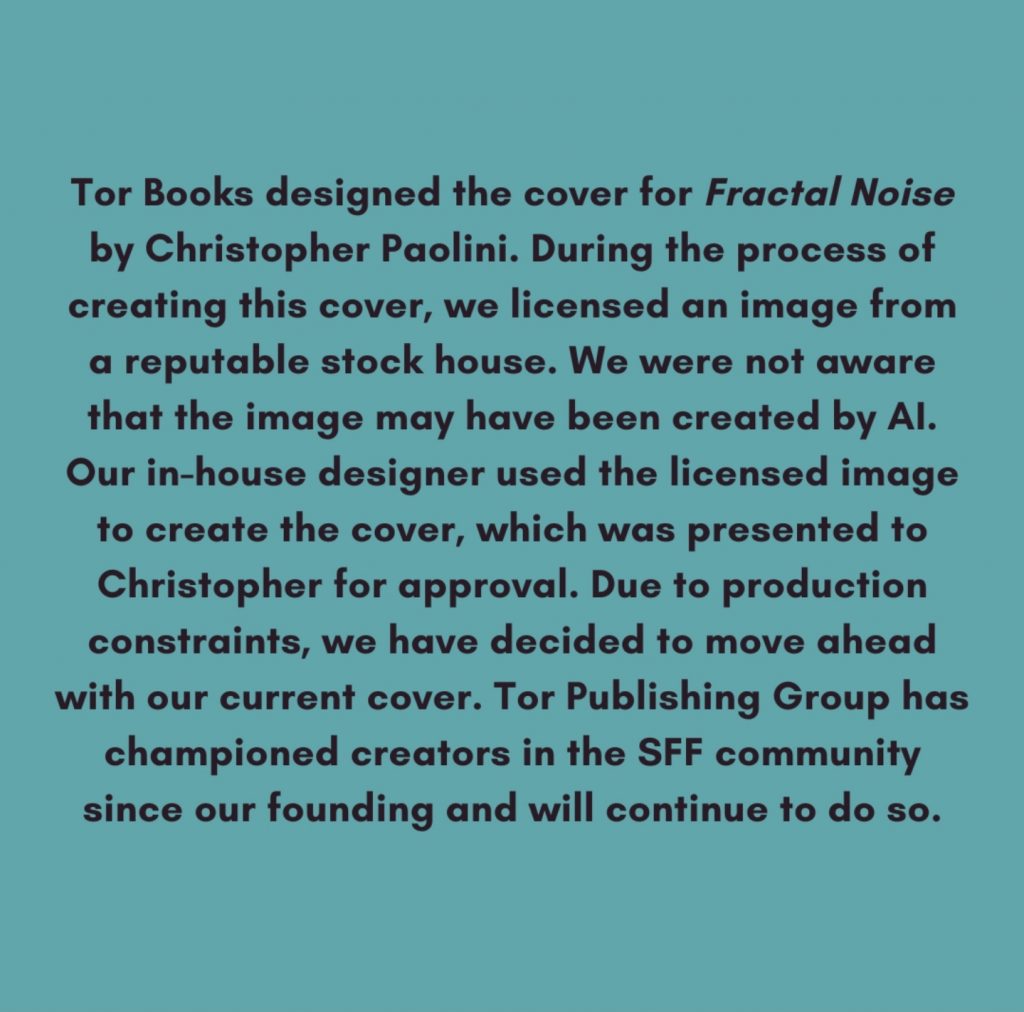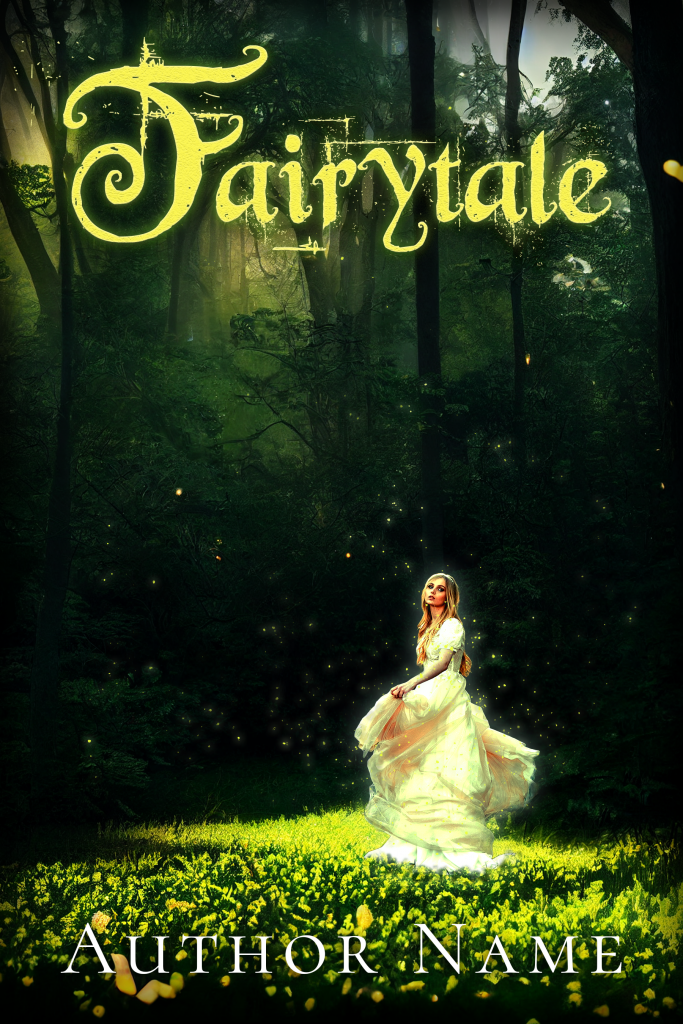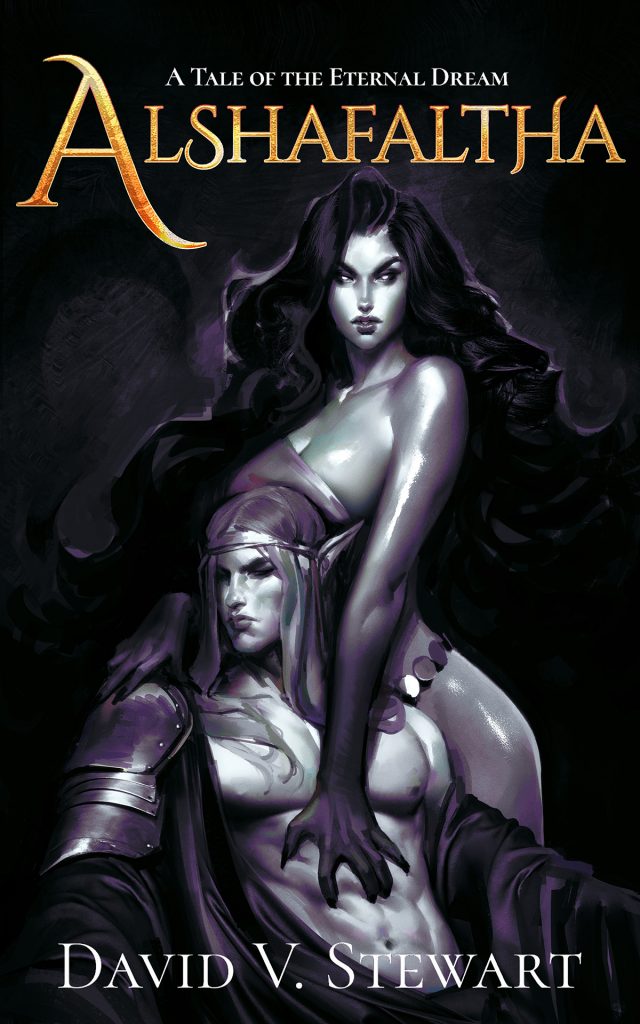I’ve already said everything that can be said on AI image generation months ago elsewhere, but I’ll sum up everything you need to know about the controversy:
Problem 1: People thinking that AI art is “art.”
That is to say, it has some expressive artistic value. While valuation of art is in the viewer, intent is in the artist. 20th century artistic trends, both in academia and in pop culture, have divorced both the artist from the art as well as the intent of art from its effect. Thus people can, with a straight face, say that Disney gets to decide their fanfiction is authentic Star Wars because they bought the monopoly rights to make Star Wars content. The same people will also say that Sam and Frodo are gay because that’s how they interpret their relationship.
Hopefully, you don’t need an essay to explain how bonkers this mindset is, but’s everywhere and has made “this looks cool,” into “this is art.” AI art is a computer-generated image, not a work of art. Which brings me to #2:
Problem 2: people thinking they are an artist by telling a computer what to do
This is one of the silliest things to come out of the whole AI art thing this year: AI artists. These are people who prompt a computer to generate an image and then call themselves an artist because – shockingly – the computer does what it is designed to do. Even worse, they think there is some magic formula of special computer prompts that will bring out the good “Art.” They’re treating it like a magic spell, a conjuring that only an experienced wizard can pull off. No wonder some people think art generators are demonic!
The truth is that art prompts are like using a search engine. Instead of showing google image results, it generates a composite based on those results. It’s more complicated than that in practice, but that’s the gist of it. A person calling himself an “AI artist” is like a person in 1996 calling himself an “internet wizard” because he discovered that Alta Vista can find webpages for him.
Problem 3: Non-artists don’t really get it
Related to no. 1, there are a lot of non-artists weighing in on AI art without knowing how artists are currently using it or how art and artists have functioned throughout history. Never mind they don’t know what art is, they don’t know how it is done (or was done).
Take a look at what concept artist Noah Bradley of MTG fame does with AI art. https://noahbradley.com/ai/
Yes, these are shortcuts. Yes, it would be better if artists composed every detail of a painting out of their own imagination. However, we live in a world of finite resources and time. Putting out more art to your client’s specifications means more success.
And the truth is that historically, lots of shortcuts were used. Painters would re-paint the same piece several times, selling it to several patrons. Complex compositions were done by teams of low-paid (or unpaid) art students working for a master who put his name on the piece after doing the details of the hands and face (which AI has, unsurprisingly, an incredibly difficult time producing).
And, just as importantly, artists copied each other, frequently. They studied the works of those who came before, or straight up stole the techniques of their competitors. The 19th-century image of the starving, dedicated, creative artist giving up everything for the purity of the form is an inspiring archetype, but unrealistic. Artists of the past lived in a world where they had to sell their works, too.
Then, of course, we have modern examples like Greg Land, who frequently re-uses his art and traces stock photos (or porn). Why does he get work? Because he completes his work to a standard and finishes on time, which makes him stand out from the rest of the crowd in the comics world, where delays and poor final products are the norm.
That brings me to the next two points.
Problem 4: “Art” sucks
That is to say, art has sucked for a long time. On the one hand, you have the modern to post-modern progression in the academic realm, which has reduced “modern art” to a schtick. On the other hand is the corporate sphere, which has reduced art to something purely functional and part of a grand marketing machine.
Laymen are disconnected from art as a result. This is why they are impressed with AI art – they simply aren’t familiar with any way of viewing art critically since most of what they see is either bland corporate schlock or repugnant, insulting garbage.
The fact that an AI piece could win a contest says more about the state of art than the capabilities of AI. It’s comparable to when MIT students got AI-written papers full of nonsense jargon published in reputable journals – it says a lot more about the peer-review process than the program that wrote the papers, and that was the point.
Problem 5: Artists suck
No, not all artists, but a large enough portion of them it makes finding one that has the combination of skill and professionalism arduous. We’re at the nadir (I hope) of a 100+ year-long degradation of the arts. What we inherit is a set of institutions largely incapable of producing artists with the right skills and work habits to serve the needs of people like myself, who are looking to use art as a part of other products (in my case, novels). Just look at the portfolios (if they have them) of the recent art graduates of your local university. An art instructor from 1890 would not just blush at what’s being presented as “quality work,” they would be bewildered. You simply can’t trust a person with a degree in art to have any skill when it comes to producing the subject of their degree.
You can also talk to the many writers trying to get comics products out the door on how hard it is to deal with artists. Lack of skill and lack of professional attitude go hand-in-hand. It’s very common for even mainstream comics to end up with multiple artists for a single monthly issue because they can’t complete a book. It’s much worse for indie comics, where an artist may just disappear (often with his payment in hand) before production wraps.
Frankly, most artists are not capable of producing a cover for one of my books that is good enough at any price point. Those that are capable are prohibitively expensive. Real skill is rare. I’d love to hire more artists, but it’s an indulgence, especially if I’m putting out an experimental book that I know isn’t going to hit the mainstream.
Problem 6: Non-art is already standard.
Most of my book covers are photoshopped. Some of these are quite complicated designs, melding more than a dozen images that can all be highly manipulated to create a final product, but they aren’t illustrated. They aren’t art as most people mean the word, and in the context of this article.

Over time, photo covers have become the standard for book publishing, even from big publishers that you would think would have the budget to hire real artists.
There are a few reasons for this:
- Penny-pinching (publishing is a tough business, after all).
- Genre trends – the more photo covers there are, the more that becomes standard and your book will look out of place by NOT having one.
- Make work for in-house designers. In other words, it gives some people something to do for a paycheck.
The second one is the larger concern for indie publishers. Some genres (like horror) will not tolerate an illustrated cover. Genres like fantasy require an illustrated cover of such quality it will be prohibitively expensive, even for big publishers pushing known authors. Real painting skill is rare, and if you have a sub-standard cover it will be worse than having a photo cover – much worse.
But the main thrust is that consumers, not just publishers, and authors, have already accepted that book covers don’t need to contain art. Nobody has refused to buy books because their cover has a bunch of photos bashed together; making a standard that says “no computer generated images” seems like an arbitrary line considering art has already been entirely ejected from the process years ago.
Problem 7: AI art is actually bad
Not in a moral sense, in a technical sense. Lacking artistic intent, it’s mere chance as to whether the computer assembles something useful for my purposes. The more complex the composition, the less likely it becomes that the AI will generate anything other than a mush of colors. Human faces tend to look “samey” – an average of features with no distinctiveness. Hands… well, hands are hard even for people to draw. Having more than one person in a composition will not go well for you.

Having designed some covers using AI, the limitations are insurmountable. However, you can, if approaching it like a photo cover, make a decent cover using AI images instead of stock photos. This speeds up production in that it cuts down on the time spent searching for an image as well as the number of images and manipulations needed to create the final product. I can have the computer create an image of a forest filled with gold and green rather than taking my own time to find the right photo and manipulate the color palate and paint over it to get it right. I still might have to do some overpainting, but it will be a lot less than if I used a photo for a base. That increase in efficiency continues with other photo elements. I could use 3-4 AI images instead of 12 photos.
I don’t find this objectionable since what I usually do is just bash photos together, and I’m doing more of the same. The only moral difference is that somebody created the original assets, and I paid to license them. A person got paid a very small amount for taking the picture, whereas with AI the source images that are being copied are obscure and not gathering royalties (if they are even alive to gather them). Only the programmer gets paid. However, artists copying each other (as they have in the past) did not gather royalties from each other, so it’s a bit of a grey area. How is the program using the source images? What images is it even looking at?
Pay to Play
As an author who spends a lot of time enabling other authors to succeed, I like breaking down barriers to entry. Having a decent book cover is part of the cost to play the game. Making that cheaper and easier to get is a plus. It means more writers can get into print and recoup their costs, or even make money. A decent custom-designed cover using photos (not art) still cost a lot of money – hundreds of dollars depending on the genre and complexity of the design. And the author has to wait around for the designer to do his or her work, just like an illustrator.
Lowering that threshold of time and money means more authors can pay the cost of entry. Authors can write and release more quickly, hitting trends if they like to write to market. AI assets could be part of facilitating that success.
What is the art of a book?
It’s inside the cover; it’s not the cover itself. The cover is an advertisement. Art can function in that capacity, but it’s art to a purpose, added to a product. It’s not the product itself. The book is the product. That’s part of why photo covers became a thing. We know instinctively that a book is NOT its cover. I still plan on using illustrations in my books, but not for every book, as that doesn’t make financial sense. As it is, interior illustrations are already an indulgence for me, a kind of patronage if I can afford it, rather than part of a business decision, as interior illustrations don’t improve sales much, if at all. Splurging on painted covers is for big projects I expect to sell well over time.
Just for fun, you can check out this alternate cover of my latest fantasy novel, Alshafaltha, by Ibrahem Swaid, and compare it to the original cover, which uses AI assets, below. It’s great! The book is a good example of what I’m talking about, because I didn’t expect it to sell well (too outside of the genre standard), and it hasn’t, though you should still read it if you want a classical tragedy. Not too many authors pursue that sort of story these days.







Pingback: Art from Hell - Alexander Hellene
This is the most nuanced take on the whole AI debate. Thanks so much for articulating exactly how I feel about it. The only thing I disagree is that, like photo collages of book covers, the way you manipulated computer generated images for your covers can possibly be considered as “intent of the artist.” Nevertheless, your analysis is impeccable.
Samo Burja made an interesting point:
In a decade early AI art will probably produce the same cringe as early 3D graphics do today.
Your analysis pretty much matches mine. I even have a recent blog post showing how I used AI to generate a background I liked and then painted over it. Most AI generate art at such poor resolution that the purist in me insists on painting over it. And really, if you hadn’t pointed it out on your covers, I never would have noticed. I don’t think most people would notice if you didn’t tell them.
Yeah, we’ve heard it was before, but just like with Afterglow, it’s noice yo e have it all in one place. I actually saw the video on YouTube instead of BitChute, and the Susanalgorithm recommended me first this video from one of such wizards who had the idea on entering Bible passages as prompts to see if the AI can generate something with “theological meaning” https://m.youtube.com/watch?v=s0AqlK_gCbU